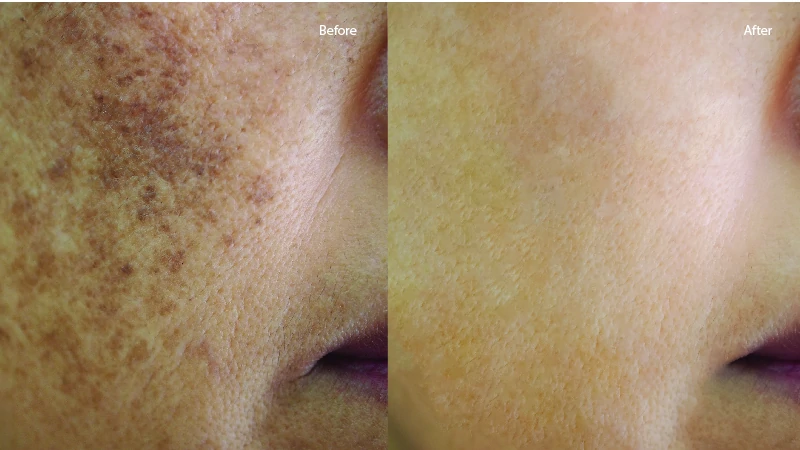
Pigmentation Treatment in Bangalore
Melanin is the pigment that is responsible for giving color to the skin. Color of the skin is determined by the quantity melanin. Thus a dark skinned person has more melanin compared to a fair skinned person. Hyperpigmentary skin disorders is a condition with increased pigmentation of the skin and/or mucous membranes either diffusely or in a patchy manner due to underlying pathological conditions.
Causes of Pigmentation
Increase in the melanin content can be due to several factors like aging, hormonal imbalances, pregnancy, over-exposure to sun, certain drugs, nutritional disorders, metabolic diseases, endocrine disorders, inflammatory disorders etc .
Types of Pigmentation
Dark circles or Periorbital melanosis
Dark circles or Periorbital melanosis may be physiological, occurring at puberty, or hereditary. Various predisposing factors, e.g. stress, eye strain, severe chronic illness, biliary disease and endocrine disturbances like hyperthyroidism and menstrual disorders etc have been considered to the causative factors for dark circles.
Freckles
Freckles are normal skin cells that contain more melanin pigment compared to the surrounding areas. Freckles are seen in fair skinned people on exposure of sunlight. More common in summers than winters and seen on the sun exposed areas like face, shoulders and back. The Sun's ultraviolet radiation causes melanocytes to make more melanin, which can cause freckles to appear or become darker.
Lentigo
A lentigo, is a dark (hyperpigmented) lesion caused due to increase in the number of melanocytes in the skin. Lentigos are seen both on the sun exposed and non sun exposed areas of the body. Lentigens show no seasonal variations and do not aggravate on exposure to sunlight.
Melasma
It is a pigmentary disorder characterized by dark brown patches seen on the sun exposed areas, particularly the forehead, cheeks, temples and upper lip. Melasma is more common in females. The cause of melasma is multifactorial and some of which include sunlight, hormones, certain medications and hereditary (runs in families).
Facial melanosis
It is a pigmentation disorder that predominantly affects middle-aged women . It results from photosensitization with tar derivatives and other compounds incorporated in cosmetics. The condition usually starts over the face and very quickly spreads to involve the chest, neck, scalp, hands and forearms.
Post inflammatory hyperpigmentation
Hyper pigmentation following inflammation is very commonly seen. Inflammatory conditions include contact dermatitis, infections, burns, drug rashes and numerous other dermatologic diseases. The condition is more commonly seen in darker individuals . The diagnosis is obvious because of preceding history of dermatoses.
Nutritional disorders
Hyperpigmentation is seen in deficiency of Vitamin A, Vitamin B3, Vitamin B12, Folic acid, Vitamin C. Deficiency of one or many of the above mentioned nutrition can present with hyperpigmentation in different patterns.
Drugs causing hyperpigmentation
Numerous medications can cause hyperpigmentation. Few to mention are Antimalerials, Clofazamine, Phenytoin, Minocycline , amidarone, phenothiazenes , anti tumour agents.
Management
At 4 Senses, the Doctors after taking a proper history, will thoroughly examine the patient under dermatoscope to find out the cause of hyperpigmentation and the type of hyperpigmentation. Following this specific treatment is given in the form of Creams or lotions, tablets, chemical peels and LASERS etc depending on the diagnosis .If you are looking at treatment for Hyperpigmentation, contact Call:6366494494
